Bide the Wiccan Laws we must In Perfect Love and Perfect Trust. Live and let live. Fairly take and fairly give. Cast the Circle thrice about to keep the evil spirits out. To bind the spell every time let the spell be spake in rhyme. Soft of eye and light of touch, Speak little, listen much. Deosil go by the waxing moon, chanting out the Witches' Rune. Widdershins go by the waning moon, chanting out the baneful rune. When the Lady's moon is new, kiss the hand to her, times two. When the moon rides at her peak, then your hearts desire seek. Heed the North wind's mighty gale, lock the door and drop the sail. When the wind comes from the South, love will kiss thee on the mouth. When the wind blows from the West, departed souls will have no rest. When the wind blows from the East, expect the new and set the feast. Nine woods in the cauldron go, burn them fast and burn them slow. Elder be the Lady's tree, burn it not or cursed you'll be. When the Wheel begins to turn, let the Beltane fires burn. When the Wheel has turned to Yule, light the log and the Horned One rules. Heed ye flower, Bush and Tree, by the Lady, blessed be. Where the rippling waters go, cast a stone and truth you'll know. When ye have a true need, hearken not to others' greed. With a fool no season spend, lest ye be counted as his friend. Merry meet and merry part, bright the cheeks and warm the heart. Mind the Threefold Law you should, three times bad and three times good. When misfortune is enow, wear the blue star on thy brow. True in love ever be, lest thy lover's false to thee. Eight words the Wiccan Rede fulfill: An ye harm none, do what ye will.
Don't wanna be here? Send us removal request.
Text
“Father of Witches - blessed is thy name in thy secret kingdom. In nature thou dost give us meat and drink, Fire to warm our bodies and love to warm our hearts. Be strength unto thy horn and to us power, wealth and wisdom. Honour to the crescent and the waning and she who walketh in brightness, the Mother of Enchantments. Be good fortune in thy waxing, merriment at thy full, and evils be banished in thy decrease.”
335 notes
·
View notes
Text
✨🔮 witchy playlists 🔮✨
//playlists for each of the witches, playlists that, for me, hold their essence\
green witch 🌿🦌✨
urban witch 🏙🕯
tech witch 👾🕹
love witch 💖🥀🌸
moon witch 🌙🔮
sun witch ☀️🌻
cosmic witch 🛸💫🚀
sea witch 🐚🌊🧜♀️
16K notes
·
View notes
Text
🧚🎉Fairy Festivals🎉🧚
🎉 Fairy festivals take place at crossover points in the seasons. Equinoxes and solstices are determined by the position of the Sun, but the other four festivals are celebrated when the time feels right, so the dates given below are approximate.
🎉 There are other festivals too,such as Christmas Eve,Christmas Day, and New Year’s Day. Any human festival that touches on old traditions,from Ramadan to a Japanese Flower Festival, is a fairy feast. If you celebrate these festivals and make the effort to tune into what concerns the fairies, you will draw closer to their world. If you celebrate a special meal, remember to leave a little outside afterward for the fairies
1. 🌷 Imbolic - 🌷
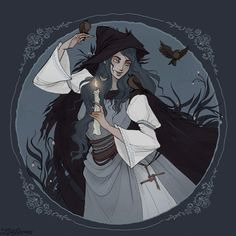
February 2 in the Northern Hemisphere/July 31 in the Southern Hemisphere
Imbolc means “in the belly,” and this is the time when life stirs in the belly of the earth. Frost sparkles and the pale light lingers each evening,bringing the message that spring is on the horizon. Imbolc is the delicate crossover point from winter’s depths into the New Year. It is a feast of lightness and brightness,but also a time of cleansing,to make way for the new. The Hag, who is Dark Goddess or Dark Fairy, gives way now to the Maiden, who is young and radiant.
Fairies love neatness and good housekeeping,so it is a good idea to have a late-winter sort-out,in preparation for fresh activity. While the fairies are busy coaxing snowdrops and crocuses out of the winter-hard earth,do something creative of your own,such as knitting,painting,or writing poetry. Ask the fairies to lend you a little of their magic by leaving them an offering,such as a piece of wool or a verse written just for them.
This feast is also called candlemas,sacred to St.Bridget,who was the successor to the pagan goddess Bride (pronounced “Breed”). Bride was the keeper of the sacred flame,which represents eternal life. She is the patroness of poetry,smithcraft,child birth, and healing, and is a very powerful fairy indeed. Invite her into your home by lighting as many candles as you like, in your windows and around your house. Ask her to bless your projects for the coming year,and pledge a special act of caring for the natural world in return,to seal your pact as the year waxes.
2. 🌼 Spring Equinox- 🌼
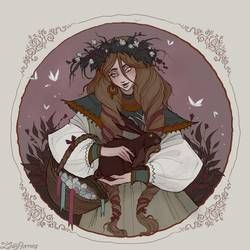
March 21 in the Northern Hemisphere/September 21 in the Southern Hemisphere
The fairies are very busy at the Spring Equinox,looking after all the flowers that are newly blooming.Scandinavian fairies become active now: the Russian cellar fairy,The Domoviyr,casts off its skin and grows a lighter one for summer; and the Russian Rusalki,or river fairies are glimpsed by lakes swollen with melted snow.
A tree planting project is a very fairy-friendly activity at this time. A seasonal blitz on the garden is also called for. While you are hard at work, digging and pulling away at dead winter twigs, it is easy to go into a kind of trance. This, coupled with the spell of the natural world around you,can create the perfect state of mind to catch a glimpse of fairies.You can be sure they are near you,helping you with their energies.Plant some seeds of your choice and, as you put them in the earth, close your eyes and make a special request for fairy help. Visualize the fairies tending your seeds,giving them their love and care. Ask out loud for the fairies to help you,and sing or hum and you plant. Touch the soft soil with your bare hands and make real contact with the earth.
Place water in a pottery or glass jug (plastic or metal is best avoided) and leave it out in the noon sunshine. Ask the fairies to bless it. Imagine them dancing around it and coming up to touch it with their glimmering fingers. Use the water to give your houseplants a special spring blessing.
The Green Man is a powerful nature spirit that has been sensed by many people. He is represented in numerous churches as the Foliate Mask (a face made up of leaves),and one theory about his presence is that the masons who fabricated him had hidden sympathies with the old nature- worship. He is making his appearance now on some new park benches and monuments. However, you can make contact with the real Green Man out alone walking through the woodland. Ancient and wise,he is watching you. Catch a glimpse of him behind tree trunks or in the lacework of budding branches. Hear his footfalls behind you as you walk. He is the very breath of Nature, and his strength is bursting forth in springtime.
3. 💐 Beltane - 💐
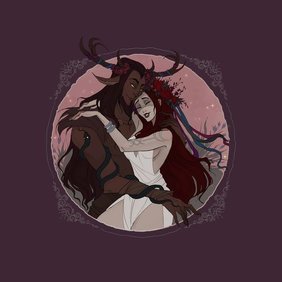
April 30 in the Northern Hemisphere/October 31 in the Southern Hemisphere
Of all the festivals, Beltane is the most flagrantly joyful and sensuous as Nature is bursting forth with beauty and excitement. This was the Celtic beginning of summer, and also marked an important transition for the people of Fairy, for it was the time when the Milesian Celts landed on the shores of south-west Ireland. With this, the last of the magical peoples,the Tuatha de Danann, receded from the the world of humans into the Hollow Hills and became the people of the Sidhe.
However, they and the other fairy folk have not gone very far. You will find them dancing in a bluebell wood or skipping in the sunshine,sheltered by a greening hedge. Beltane is the time when good fairies reign supreme and bad fairies retreat. Fairies are very active now and may try to steal butter,or some of the ritual fire that used to be ignited on hilltops and is still lit by modern pagans.
This is the maypole season, but instead you can always dance around a friendly tree. Link hands with friends, and you may find yourselves spontaneously re-creating the kind of things people used to to do when seeing fairies was commonplace:lingering,walking,and talking, in the open air, away from television,computers,and other modern distractions.
There are many tales of beautiful fairies marrying mortals. Such tales usually end in tragedy, for fairy and human can never truly be joined. Better to borrow some of the fairy enchantment by performing a little magic of your own! Rise early on May Day and wash your face in the dew or simply walk in it. As the rhyme says: “The fairy maid who, the first of May Goes to the fields at break of day, And walk in dew from the hawthorn tree, Will ever handsome be.”
Welsh legend tells how the hero Pwll saw the Lady Rhiannon riding past him at Beltane and, after pursuing her, he eventually won her. Rhiannon is one aspect of the Fairy Queen,riding on her white horse between the worlds. As you sit quietly outside,on a bank in the late spring dusk,listen for the sounds of her horse’s hooves,and open your eyes to the shimmer of her sea-blue cloak. When Rhiannon touches your heart, she will fill it with love and inspiration.
4. 🌹 Midsummer - 🌹
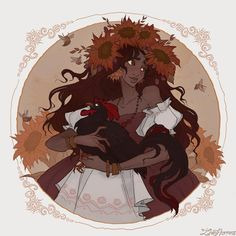
June 22 in the Northern Hemisphere/December 22 in the Southern Hemisphere
This is one of the most magical times of the year, when fairies are very active and visible, playing pranks and even, it is said, stealing away the young and beautiful to join them in the Hollow Hills. The sun is now at the height of its strength and this is an important crossover point,such as the fairies love. For at the Midsummer Solstice the sun stands still, before beginning to recede as we move into the waning half of the year.
Flowers are colorful and luxuriant, and one radiant day seems to merge into another, as late dusk meets early dawn. At no time is the natural world more inviting. Take part in it by going on quests -long walks to sacred spots,evening camping out with the minimum of equipment,to draw close to the mystery that is all around, and to the Fair Folk in particular.
The rose is possibly the most sensuous bloom of all, and at midsummer it is often at its most gorgeous. Roses in the garden are especially likely to attract fairies. Distil water from rose petals and add it to your bath, asking the fairies to lend you some of their enchantment and to help you attract love. Brew tea from rosebuds and drink it,to increase your psychic powers.Plant a rose bush with a friend, to affirm the loving bound between you and invite the fairies into your life.
St.John’s wort is a herb known to break any negative fairy enchantment and drive away depression. Pluck some on Midsummer’s Day and carry it, to keep cheerful.
Look out for water nymphs by streams, or for undines for water elementals on the seashore- or for even the Lady of the Lake herself,rising from the luminous depths.In olden times, these beings were said to have no souls. It is closer to the truth to say that they do not have human morals. Conventions often conceal or feelings, but the beauty of the water fairies opens us to our unconscious tides; see them and let yourself be transformed.
5. 🌾Lammas- 🌾
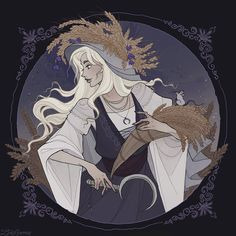
July 31 in the Northern Hemisphere/February 2 in the Southern Hemisphere
Lammas is “Loaf Mass,” a christian version of a much older festival known as Lughnasadh, or the “Feast of Lugh.” Lugh was a Celtic god,lord of the Tuatha de Danann, and his name means “bright one.” Lughnasadh is a major fairy festival, and many fairies become active during this period,such as the Russian Polevik, who kicks sleepy harvesters awake. It is also a time when fairies move about in preparation for winter,and processions of them may be seen as a line of twinkling lights moving between the hills in the countryside.
At Lammas, the fields are golden with corn and splashed with red poppies. It is hazy,lazy time of holidays and abundance,but there is an underlying theme of death,for the Corn Spirit must be sacrificed in order to reap the harvest. If you walk out into a field of ripe wheat, you may sense the anger of the nature spirits as what is to be taken from the earth,even thought that is a part of the natural cycle of life.Gather up some ears of wheat and tie them into a bunch with red thread,to make a charm for the coming winter to hang over your hearth. At the same time,pledge an act of caring for the earth,such as clearing a derelict site in your neighborhood or garden, or planting and tending a herb, as payment for what you-and all of us- take from it.
At home, bake your own bread, using the rising of the dough as a spell to ensure that everything prospers in your life. While you are kneading the bread dough, say to yourself “As this dough swells, so may my fortunes increase.” Ask for your own personal Brownie, or house fairy, to come and help your bread rise- and remember to leave some breadcrumbs outside afterward,for the fairies.
Some say that Lugh is lord of the waning year, and his dance- through the waving,whispering corn- is a dance of death. If so, it is a reminder that all things come in cycles,and that everything is united in love and beauty. Stand at the edge of a sun-kissed wheat field and see the shimmer and sway that betrays the presence of Lugh. Take a few moments to feel respect for the earth in your heart, and understand the meaning of the Wheel of Life.
6. 🍁 Autumn Equinox (Mabon) - 🍁
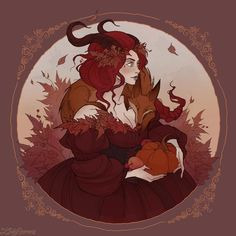
September 21 in the Northern Hemisphere/March 21 in the Southern Hemisphere
At the Autumn Equinox, Nature stands poised between light and dark,but darkness is gaining. The veil between this world and the Otherworld is at its thinnest, and all manner of spirit visitations are more frequent now.
The hedgerows are beaded with berries,and mist lingers in the hollows. Sometimes the wind whistles in from nowhere and tosses baring branches. On other says, the mellow sun caresses the fields with slanting fingers. It is a time for reflection, but also for industry. In days gone by, preserves would be made for winter store and the help of the Good Folk would be sought by country people.
Absorb the atmosphere of the season by going blackberrying. In Celtic countries, there may be a taboo on eating blackberries, because these belong especially to fairies. However, as long as you gather them with respect and do not denude the bramble bushes, they will hardly object. Better still,leave out some of your homemade blackberry pie or wine for them,so that they will bless you. When this month ends, leave the blackberries alone and move on. Also look out for a bramble bush that forms an arch-so much the better if it faces east/west, for that mirrors the passage of the sun. Crawl through this three times on a sunny day to be healed of physical ills, especially rheumatism and skin troubles.
At this mysterious time, pay honor to Queen Mab. Her special gift is to bring dreams and visions to birth within us. She is really one of many manifestations of the Goddess, in her autumnal guise of wise-woman and Lady of Magic, and she is linked with ancient ideas of sovereignty- for the king drew his power from the land, and Mab presided.
Preferably at the Full Moon closest to the equinox,place good-quality wine in a stemmed glass or chalice,and take it into the garden or a secluded place.Raise the glass to the Moon,say, “Mab, I honor you”and pour some of the wine onto the earth. Drink a little and say, “Mab, I drink with you,” Then return home,light a bright-green candle beside your bed,gaze at the flame and say, “Mab,give me wisdom,” Place some jasmine or rose oil on your pillow,extinguish the candle-and drift into Fairyland. This is a little ritual that you can repeat during any Full Moon if you wish.
7. 🎃 Samhain - 🎃
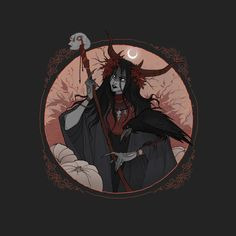
October 31 in the Northern Hemisphere/April 30 in the Southern Hemisphere
Samhain means “summer’s end” and is pronounced “sa-wen.” This ancient Celtic festival at the official start of the winter was later Christianized as Halloween- a time when the dead were remembered. There was always a sinister aspect to Samhain,because certain sacrifices had to be made in order to survive the coming cold weather. Animals had to be slaughtered,and some say that human sacrifice took place to propitiate the spirits. Sacrifice,however, is a corruption of nature worship,for life is hard enough as it is and all we have to do is show respect.
Barrow mounds,shrouded in mist,are particularly eerie places at Samhain. Draw close,if you dare,and sit quietly.Do you hear the strange,far-off noise of fairy music,or the sound of knocking? Maybe the mound will open for you and unearthly light will stream over the barren fields.After Samhain,the earth is given over to the powers of darkness and decay.No crops or berries may be harvested after this time,because the Phooka, a malevolent Irish Fairy,blights them. The true meaning here,of course,is that death and decay have a place in the natural order,requiring due honor and respect lest they get out of hand.
Traditionally, this is the start of the story telling season. While the wind whistles around the eaves or the mist comes down outside,gather family or friends around your hearth- preferably with a real fire burning in it. If you do not have an open hearth,substitute a collection of large,burning candles. Sit round and speak of times gone by and people who have passed over to the other side.Ask the Beloved Dead to be present, if you wish(but note that this is not a seance,and the Beloved Dead are invited,not summoned). Laugh,share funny stories,feast,and drink.
Cerridwen is the Underworld Goddess and the Fairy Hag most associated with this time. In her magic cauldron,she stirs a brew that confers inspiration and transformation. Simmer up a hearty soup of root vegetables or pumpkin, to share with friends,then light a black candle and ask Cerridwen to guide you through the darkness into the light. You will be both safe and wise.
8. ❄️ Yule - ❄️
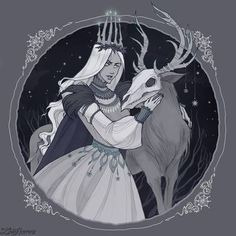
December 22 in the Northern Hemisphere/June 22 in the Southern Hemisphere
Yule is the Midwinter Solstice, when the sun again appears to stand still,as it did at midsummer,but the season is poised for the return of light. Celebrations of Christ’s birth were moved to coincide with the much more ancient solstice.
As you deck your Christmas tree,remember that the evergreen is a powerful symbol of the enduring life in Nature. Of course,is has a fairy on top of it,confirming that it is a festival of the Fair Folk,who also rejoice in the sun’s rebirth. Decorating your tree is an important magical act,for the decorations are fairy charms. Each member of the family should hang at least one special charm of their own,to enable a wish to come true.
Jack Frost is an active fairy in the cold weather,painting windows with intricate lacework. In Russia he is called Father Frost,the soul of winter,covering the trees in ice. Do not shrink from the frost fairy-go out and wonder at his works and he will reward you with hope and joy,just as in Russia Father Frost brings presents for the children on New Year’s Day.
By far the best-known and most powerful fairy at Yule is Father Christmas himself. Today we know him by his robes of red and white, but in the past he also wore green and other colors. As we have seen,red is the color both of life and death, and many fairies wear red caps. The hearty red of Father Christmas is a sign that he is an Otherworld being-very much alive,but not of this earth. He is recognized all over the world, as Kris Kringle in Germany and Pere Noel in France. In Brazil he is Papa Noel,and in China Dun Che Loa. He is the essence of Yuletide mystery,joy and renewal,and like many traditional fairies, he comes in and out via the hearth.
When all is quiet on Christmas Eve, get ready to welcome Father Christmas- light a candle and look at the stars. Pledge a gift for a friend and one for the world, and ask for a special gift to answer your heart’s desire. Write your wish on a piece of paper and “post” it up the chimney if you have an open fire. If not, burn it in the candle flame. Can you hear those sleigh bells?
(Art By: IrenHorrors On Deviantart -Link)
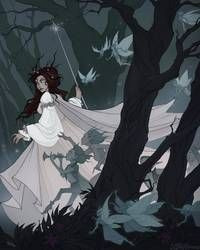
11K notes
·
View notes
Text
The Elements: What to Remember
Earth
Rules the North
Symbolic Color is Green and Brown
Symbolic Item is the Pentacle
Salt can be used to represent Earth on the Altar
Represents our Physical Self
Represents the home, and most materialistic things
Magick that corresponds with working with Earth is including, but not limited to: Kitchen Witchery, Garden Magick, Herbal Magick, Working with Essential Oils & personal aromatherapy, Crafting Potions
Air
Rules the East
Symbolic color is Yellow
Symbolic Item is the Wand
Incense or feathers can be used to represent Air on the Altar
Represents the voice, communication, intellect, creativity, communication and eloquence
Magick that corresponds with working with Air is including, but not limited to: incense magick (creating or burning incense with an intended purpose), sigil crafting, as well as creative aspects such as singing, dancing, or playing an instrument
Fire
Rules the South
Symbolic Color is Red
Symbolic Item is the Athame
The Candle can be used to represent Fire on the Altar
Represents our passion, the drive to create and inspiration as well as justice
Magick that corresponds with working with Fire is including, but not limited to: candle magic, sigil burning, circle casting
Water
Rules the West
Symbolic Color is Blue
Symbolic Item is the Chalice
A bowl of consecrated water or symbols that represent water (such as seashells) can be used to represent Water on the Altar
Represents our emotions, maturity, and patience. Sometimes Water can represent death & rebirth.
Magick that corresponds with working with Water is including, but not limited to: bath magick, brewing potions & magical teas, crafting magickal water (Sun/Moon Water) as well as ventures such as collecting rain water.
Spirit
Rules around us; a universal element (the “Middle” of the compass) [Spirit reminds us that we “are the center of our universe” and the Elements are around us to guide us where is necessary for the time being]
Symbolic Color is White
Represented by the Cauldron
An element that is all around us and not fixed like the main four
Represents wisdom and the universe; transcendence
About “knowing one’s self”
Magick that corresponds with working with Spirit is including, but not limited to: Cosmic Magick, meditation, Ritual Work
3K notes
·
View notes
Text
1 note
·
View note
Text
Save The Date : 2020
The 13 Full Moons of 2020
🌑🌒🌓🌔🌕🌖🌗🌘🌑
🐺 Friday, January, 10th
❄️ Sunday, February, 9th
🐛 Monday, March, 9th
💗 Wednesday, April, 8th
🌸 Thursday, May, 7th
🍓 Friday, June, 5th
🌩 Sunday, July, 5th
🐠 Monday, August, 3rd
🌽 Wednesday, September, 2nd
🏹 Friday, October, 2nd
💙 Saturday, October, 31st
🐿 Monday, November, 30th
🥶 Wednesday, December, 30th
Retrograde Planetary Movements
Uranus Retro in ♉️ : Aug, 12 (2019) – Jan, 1st
Mercury Retro in ♊️+♒️ : Feb, 17th – Mar 10th
Pluto Retro in ♑️ : April, 25th – Oct, 4th
Saturn Retro in ♑️+♒️ : May, 11th – Sept, 29th
Venus Retro in ♊️ : May, 13th – June 25th
Jupiter Retro in ♑️ : May, 14th – Sept, 13th
Mercury Retro in ♋️ : June, 18th – July, 12th
Neptune Retro in ♓️ : June, 23rd – Nov, 23rd
Uranus Retro in ♉️ : Aug, 15th – Jan, 1st (2021)
Mars Retro in ♈️ : Sept, 9th – Nov, 14th
Mercury Retro in ♏️+♎️ : Oct, 14th – Nov, 3rd
Celestial Signs
♑️ Capricorn : Dec, 22nd – Jan, 19th
♒️ Aquarius : Jan, 20th – Feb, 18th
♓️ Pisces : Feb, 19th – Mar, 20th
♈️ Aries : Mar, 21st – Apr, 19th
♉️ Taurus : Apr, 20th – May, 20th
♊️ Gemini : May, 21st – Jun, 20th
♋️ Cancer : Jun, 21st – Jul, 22nd
♌️ Leo : Jul, 23rd – Aug, 22nd
♍️ Virgo : Aug, 23rd – Sept, 22nd
♎️ Libra : Sept, 23rd – Oct, 22nd
♏️ Scorpio : Oct, 23rd – Nov, 21st
♐️ Sagittarius : Nov, 22nd – Dec, 21st
Sabbat Festivals (Northern Hemisphere)
🕯 Imbolc – Candlemas : February, 2nd
🌺 Ostara – Vernal Equinox : March, 21st
🔥 Beltane – Mid Spring : May, 1st
☀️ Litha – Summer Solstice : June, 21st
🌾 Lammas – Harvest : August, 1st
🍁 Mabon – Autumnal Equinox : Sept, 23rd
🎃 Samhain – All Hallows’ Eve : Oct, 31st
❄️ Yule – Winter Solstice : December 21st
Sabbat Festivals (Southern Hemisphere)
🌾 Lammas – Harvest : February, 2nd
🍁 Mabon – Autumnal Equinox : Mar, 21st
🎃 Samhain – Witches’ New Year : May, 1st
❄️ Yule – Winter Solstice : June, 21st
🕯 Imbolc – Candlemas : August, 1st
🌺 Ostara – Vernal Equinox : Sept, 23rd
🔥 Beltane – Mid Spring : October, 31st
☀️ Litha – Summer Solstice : Dec, 21st
19K notes
·
View notes
Text

Some picture ideas for runes if you’d like to make your own.
The Wiccans Glossary
2K notes
·
View notes
Text
Who are the Goddess and God of Wicca?
The Horned God and Triple Goddess are generally the deities you’ll hear people associate with Wicca, but these very same concepts generate a lot of confusion. You’ll read a lot of books that will tell you the Horned God is like this, or the Triple Goddess is like that. There are a lot of oversimplifications and generalizations going on with these descriptions. Many Wiccan sources also refer to the Lord and Lady as well, or “The” God, and “The” Goddess (the article “the” implying they’re specific deities). This leaves people to wonder— to whom, exactly, are we referring when we use these terms?
Wicca, being a 20th century religion, is fairly unique in one way: we don’t actually have our own deities. That is, our religion wasn’t built around veneration of any specific deities of our own—we worship Pagan Gods and Goddesses of other ancient cultures in a new and modern world. We do not have our own unique pantheon, nor do we believe our religion was revealed to us by deities.
So, who are these characters, then, that you’ll find peppered throughout Wiccan books and websites? Who is the Horned God or the Lord or the God? Who is the Triple Goddess, the Lady or the Goddess? Let’s have a look.

Types and Titles - Not Names
One quick way to settle a lot of confusion is to remind people of this: these terms in question are types of deities or titles of respect. Horned God is a type of Godhead, not one specific God. Triple Goddess is a type of Goddesshead, not one specific Goddess, or a specific trio of Goddesses. These terms are merely descriptions, not deities in themselves.
Likewise, Lord and Lady are titles of respect by which we call any God or Goddess, respectively; Lord and Lady are not names. Zeus is one Wiccan’s Lord, Thor is another Wiccan’s Lord, Lugh is another's... just as a Christian's Lord is YHWH (Jehova) though they call him 'Lord' and 'God'.
“The God” and “The Goddess” are not specific deities that all Wiccans worship; they are simply the generic term for male deities and female deities, respectively. So my God that I worship may not be the same God another Wiccan worships. But I still refer to him as God, 'the' God, or Lord.
So why do Wiccans use all these titles and types instead of just using the name of their God/dess?
Originally in Wiccan covens, Wiccans didn't speak the names of the deities they worshiped outside the circle. This was to prevent others from defaming and disrespecting the deities.
This still holds today for a lot of Wiccans, though many eclectics are more relaxed on it. They might be willing to tell other Wiccans/Pagans, or close friends, who their specific God/desses are but not wish to divulge that information to just anyone.
For other Wiccans, the Horned God and Triple Goddess, or the Lord and Lady, or The God and The Goddess have taken on a persona of their own. Some would argue this is the result of watered-down eclectic Wicca and improperly trained practitioners who have failed to do any in-depth research. Others embrace the “All Gods are one God, all Goddesses are one Goddess” theory1 which has become more prevalent with eclectics in the 1990s. These people would argue that all the various God/desses in mythology are either aspects or personifications of the same divine couple.
1 The “All Gods are one God, all Goddesses are one Goddess” theory actually didn’t originate in Wicca; it was from Dion Fortune, a Christo-Pagan Ceremonial Magician. This kind of ‘soft polytheism’ is probably as common in Wicca now as ‘hard polytheism’ (the belief that deities of different cultures are all unique and distinct beings).
The Horned God
The very term “Horned God” is controversial, considering most of us grew up in a Christian-dominant society in which the only god-like being who had horns was 'the devil'. This is why the term 'Horned God' gets a lot of knee-jerk reactions.
There is no relationship, however, between the Wiccan view of Horned Gods and the Christian view of Satan. That would be like saying a pumpkin must be an orange in disguise because they have the same color skin. Horned Gods existed long before any concept of Satan did, and nowhere in the Bible was Satan described as having horns and hooves—those extra-biblical descriptions came from the Middle Ages.
Horned Gods were sometimes depicted as having curving, conical horns like the goat or ram, or sometimes the branched antlers like the stag. Sometimes they were animal-headed, and sometimes goat-footed. Some of the more well-known Horned Gods include Pan and Cernuous.
To ancient Pagans, Gods with horns were related to the wild and man’s primal nature. They represent mankind unencumbered by the trappings of civilization and living by his instincts in a natural state of being. Horned Gods were closely related to the forests—particularly the wild animals. They’re related to the hunt (both as hunter, the life-taker, and as hunted, the life-giver; thus, he perpetuates the cycles of life). They would often be associated with fertility— the virile male embracing his carnal desires without the imposition of social codes and mores guiding his behavior.
The Horned God made its way into Wicca due to the popular theories at the time by a handful of 19th century/early 20th century anthropologists who attempted to tie all of Pagandom together as if it were one universal pre-Christian set of beliefs that went underground to avoid persecution. Christianity had long painted Pagans as villains; in the age of enlightenment, many tried to look at history from a new and more open-minded perspective, and they romanticized antiquity. Some became desperate to turn the tables and paint Pagans as the victims. Ultimately, the attempts to oversimplify all the various Pagan religious from all over the world has been discredited, and the attempt to prove them going underground as a single surviving ancient cult has been debunked. Still, it was these oversimplified works that were prominent theories at about the time Wicca was forming, so it heavily influenced Wicca's formation.
To Wiccans, the Horned God motif fits in neatly in the Wheel of the Year, however it’s important to understand that just because many Wiccans worship a Horned God doesn’t mean they worship the same God.
Finally, not all Wiccans have a direct relationship with Horned Gods. Some Wiccans worship a Sun God, another god-type that fits neatly into the Wheel of the Year mythos and corresponds well to a Moon Goddess.
Remember also, that not all Gods are as easily “typecast”.
Hekate Triple Goddess

The Triple Goddess
The most commonly known triple deity form today is probably the trinity in Christianity. If one can understand how Christians see the father, the son and the holy spirit as three, distinct persons in one, then one can understand how Wiccans view the Triple Goddess. In Wicca, many Goddesses are seen as having three forms that mirror the stages of womanhood:
* The Maiden, who is the young, innocent, often (but not always) virginal beauty. She is independent and idealistic, ready to take on the world and looking to the future possibilities, filled with all the promise of what can be. She’s associated with youth, the time of coming of age, new beginnings, the new moon and spring fertility festivals.
* The Mother, who is mature, experienced lover and (often, but not always) parent. She is nurturing and protective, representing the selfless giving of oneself to sustain others. She's associated with family, children, domestic issues, growth, sexuality, the full moon, the summer (when she becomes pregnant) and winter (when she gives birth).
* The Crone, who is the wise, guiding, respected elder (but not necessarily grandmother) of the trio. She is strong and pragmatic. She represents the "dark" side-- fears, decay, and destruction. Not that this makes her 'evil'; rather, she's someone who guides us through some of the biggest challenges in her infinite wisdom. She's associated with changes and transformations (particularly the biggest transformation-- death and rebirth).
It should be noted that not all Goddesses fit neatly into a trio of Maiden, Mother and Crone. Ancient Pagans were not monotheists; they did not believe all Goddesses to be an aspect of the same divine feminine. It was the work of Robert Graves – another heavy influence, now debunked -- at the forefront of the Pagan revival who popularized this concept that eventually made its way into Wicca.
In ancient Paganism, trio Goddesses would have more often been three Maidens, three Mothers or three Crones. Just because a culture has a Maiden does not mean that they automatically must have a Mother and Crone counterpart. Historically speaking, this was not common. Even if a culture had Goddesses that would fit neatly into the Maiden, the Mother and the Crone categories, it should not be automatically assumed that they had a connection to each other.
Think of it this way: if you walked into a waiting room and found a college girl, a middle-aged mom, and a retiree, would you automatically assume they must be related because they occupy the same time and place? Of course you wouldn’t—the same thing can be said for Goddesses.
Most Goddesses will fit in at least one of these categories, but that’s simply because these are very generalized attributes. Not every Goddess in history is so easily stuffed in a box—many Goddesses can fit into more than one category. Consider Hestia, who can be simultaneously considered a Maiden Goddess (due to her virginity and never having children), but also a Mother Goddess (due to her association with domestic life, as keeper of the sacred hearthfires).
While the model of the Triple Goddess is useful in Wiccan mythos, a Wiccan must always be careful not to pigeonhole ancient Goddesses in groups of three.
9 notes
·
View notes
Text
A merry yule to everyone! Let's share the light with eachother. 🙏My light on this day are my friends that support me through anything. This year my gratitude will go to them. What is your light? Let me know!
Merry meet, merry part and merry meet again my friends.
Blessed be ❤️
12 notes
·
View notes
Text
Free books on Magick (PDF’S)
A few people have messaged me asking for my master list of working pdfs. This is what I have and its not super organized but it is in alphabetic order for what its worth. Anyways, they’re all free so please please please save them, download them, print them and most importantly READ THEM if you come across any that strike your fancy. Also, I’m not saying that every single one of these books are completely amazing, but either way, they’re here for you to make your own value judgements on.
A Modern Goetic Grimoire by Rufus Opus Afro-Caribbean Religions by Nathaniel Samuel Murrell Astral Doorways by J.H Brennan Azoetia by Andrew Chumbley Blood Sorcery Bible Volume 1 by Sorceress Cagliastro Call of the Horned Piper by Nigel Aldcroft Jackson Children of Cain by Michael Howard Condensed Chaos by Phil Hine Conjure Codex Creating Magickal Entities by David Cunningham Cunningfolk and Familiar Spirits by Emma Wilby Curses, Hexing, and Crossing by S. Connolly Devoted to Death by R. Andrew Chesnut Diabolical published by Scarlett Imprint Goetic Spellwork by S. Aldarnay Liber Null & Psychonaut by Peter J Carroll Lords of the Left Hand Path by Stephen E. Flowers Mardukite Magick by M. Cecchetelli Mastering Witchcraft by Paul Huson Necronomicon Obeah by Nicholas de Matos Frisvold Obeah: WItchcraft in the West Indies by Hesketh J. Bell The Candle and the Crossroads by Orion Foxwood The Grimoire of the Golden Toad by Andrew Chumbley The Language of Birds by Dale Pendell The Red King by Mark Alan Smith The Scorpion God by Mark Alan Smith The Visions of Isobel Gowdie by Emma Wilby The Voudon Gnostic Workbook by M. Bertiuax Pacts with the Devil by S. Jason Black & Christopher S. Hyatt Psalter of Cain Qabala, Qilpth, and Goetic Magic by Thomas Karlson Queen of Hell by Mark Alan Smith Runecaster’s Handbook by Edred Thorsson Runelore by Edred Thorsson Saint Cyprian: Saint of Necromancers by Conjureman Ali
12K notes
·
View notes


